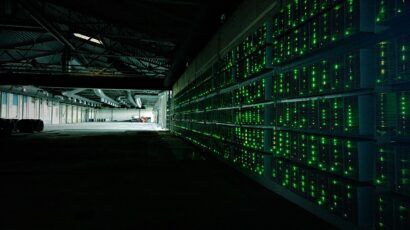Japan should restart more nuclear power plants
By Seth Baum | October 20, 2015
In August, a Japanese utility company restarted the Sendai nuclear power plant, sparking controversy and protests. Like the rest of the country’s nuclear power generators, Sendai was shut down following the 2011 Fukushima disaster, in which a powerful earthquake and tsunami caused three reactors to melt down. Sendai is the first and so far only nuclear plant to reopen, and with memory of the catastrophe still fresh, the public outcry is hardly surprising. Applications by other plants to relaunch are also facing legal challenges.
Restarting Japan’s nuclear power plants is, however, the right decision, provided they can pass strict new safety checks instituted since Fukushima. The reason is simple: While nuclear power comes with risks, the primary alternative comes with bigger ones.
Turning off nuclear power requires either turning on another power source, or using less electricity. Japan has done both. Its total energy consumption is down 10 percent since 2010 due to the nuclear phase-out, but use of natural gas, a source of greenhouse gas emissions, is up 19 percent, and use of coal, which is even more harmful to the environment, is up 2 percent. (The data is available here.) Japan is now building 45 new coal power plants, but if it turned its nuclear power plants back on (except of course for the damaged Fukushima facilities), it could cut coal consumption in half. And coal poses more health and climate change dangers than nuclear power.
The primary harm caused by nuclear accidents is increased cancer risk from released radiation. But the radiation levels from Fukushima are so low that the cancer increase will be barely noticeable, and may not happen at all. To be sure, the radiation exposure would have been worse if the prevailing winds did not blow most of the radiation out to the Pacific. But as with the Chernobyl catastrophe in 1986, the Fukushima disaster caused more harm from overreaction to the radiation than from radiation itself. That’s partly because excessive evacuations can cause more deaths than they prevent. The anti-radiation stigma also levied a psychological toll, with some healthy people committing suicide. In Chernobyl, as many as 100,000 unnecessary abortions may have been performed due to fears of radiation’s impact.
Another nuclear power plant accident in the near future is, moreover, extremely unlikely. It is normal to pay attention to disasters that are fresh in our memory and overestimate the risk of another; psychologists call this the recency effect. But nuclear plant accidents do not come in bunches. According to the International Atomic Energy Agency (IAEA), the Fukushima accident is only the second Level 7 major accident in nuclear power history, the first being the Chernobyl disaster 29 years ago. If anything, we should expect the probability of another accident in Japan to be smaller now because so many people are paying attention to the plants and the institutions overseeing them.
Meanwhile, coal plants also damage human health, through asthma, bronchitis, cancer, and other illnesses. The difference is that nuclear plants only harm health following rare accidents, whereas working coal plants do so all the time. So by switching from nuclear to coal, Japan is rejecting a small chance of increased cancer in favor of a guaranteed increase in cancer and other maladies. In fact, one study found that coal causes 387 times more deaths per unit of energy than nuclear power. Since coal is also more expensive for Japan (as even critics of the nuclear restart have pointed out), restarting the nuclear plants appears to be very much in the country’s national interest.
It is also in the world’s interest. Of all major energy sources, coal is the worst emitter of greenhouse gases, warming the planet more per unit of electricity than anything else. According to the Intergovernmental Panel on Climate Change, nuclear power plants emit about one-tenth to one-twentieth of the greenhouse gases that coal plants do, with emissions coming mainly from power plant construction and uranium mining. And climate change, which affects the entire planet for millennia, is a bigger danger than nuclear plant accidents, which affect small regions for a few years.
True, nuclear waste can also survive for millennia, but carbon dioxide emissions are worse for both humanity and nature. They spread worldwide, whereas nuclear waste is confined to a fixed location. (A regulatory double-standard currently exists across the world, in which the nuclear sector is required to sequester its waste for the long term, but the fossil fuel sector is not.) At worst, nuclear waste can render small regions uninhabitable, though it’s worth noting that the Chernobyl area now has flourishing wildlife. Carbon dioxide emissions, however, will ruin far more land via sea-level rise and other changes to the landscape such as desertification, invasive species, and ecological regime shifts. At worst, carbon dioxide emissions could render large portions of Earth’s surface uninhabitable for mammals: When temperature and humidity are so high that we cannot perspire to regulate our body temperatures, we overheat and die.
No accounting of nuclear power risks would be complete without considering the possibility that it can contribute to the spread of nuclear weapons. Since nuclear power can facilitate development of the materials and technology required to make such weapons, ordinarily one might expect the risk to increase with more power plants. However, due to a unique mix of technological and political factors, today, more nuclear power in Japan would actually lower the risk of nuclear weapons proliferation.
The reason for Japan’s unusual situation comes from the fact that it is the only non-nuclear-armed state that reprocesses plutonium. The intent is to plow the material back into nuclear reactors to make more electricity, but Japan’s resulting plutonium stockpile is now big enough to produce thousands of nuclear weapons. In 2016, the country plans to open the much-delayed Rokkasho Reprocessing Plant, which, in the absence of operational nuclear plants to consume the resulting plutonium, would increase the stockpile even further.
Japan currently has 47 metric tons of separated plutonium, 11 at home and 36 in France and the United Kingdom. If all of its nuclear power plants capable of consuming plutonium were restarted, and the Ohma plant, now under construction, were completed, Japan could consume about 4 metric tons per year—in principal drawing down its domestic supply within three years and its international supply in nine. However, if Rokkasho opens it will produce about 4.5 metric tons per year, exceeding Japan’s ability to use up its supply. And, as James Acton of the Carnegie Endowment for International Peace writes in a recent report, Rokkasho is likely to open because the surrounding area counts on it for economic development, whereas nuclear power plant reopenings, which are more controversial in their local communities, are less of a sure thing.
There is no reason to believe that Japan plans to use its extra plutonium for weapons, and the country cooperates closely with the International Atomic Energy Agency to ensure compliance with safeguards. Still, choosing to let the stockpile grow further could worsen regional tensions, especially with China, which may question Japan’s intentions. The reprocessed plutonium buildup also sets a harmful international precedent, for example with respect to Iran’s nuclear program. If Japan restarted more nuclear plants and decreased its plutonium stockpile, it could help ease concerns about its intentions and set a good example, helping to decrease global nuclear weapons risk.
Of course, nuclear and coal are not the only electricity options. Other fossil fuels pose the same global warming and health problems as coal, albeit to a somewhat smaller degree. Renewables do not, but Japan has been slow to adopt them. Ultimately a full transition to renewables may be a good idea, but that will take time, and nuclear power plants can be restarted now. Bringing them back online would be the best current energy option for Japan and for the world.
The views presented here are the author’s alone, and not those of the Global Catastrophic Risk Institute.
Together, we make the world safer.
The Bulletin elevates expert voices above the noise. But as an independent nonprofit organization, our operations depend on the support of readers like you. Help us continue to deliver quality journalism that holds leaders accountable. Your support of our work at any level is important. In return, we promise our coverage will be understandable, influential, vigilant, solution-oriented, and fair-minded. Together we can make a difference.
Topics: Climate Change, Columnists, Nuclear Energy















